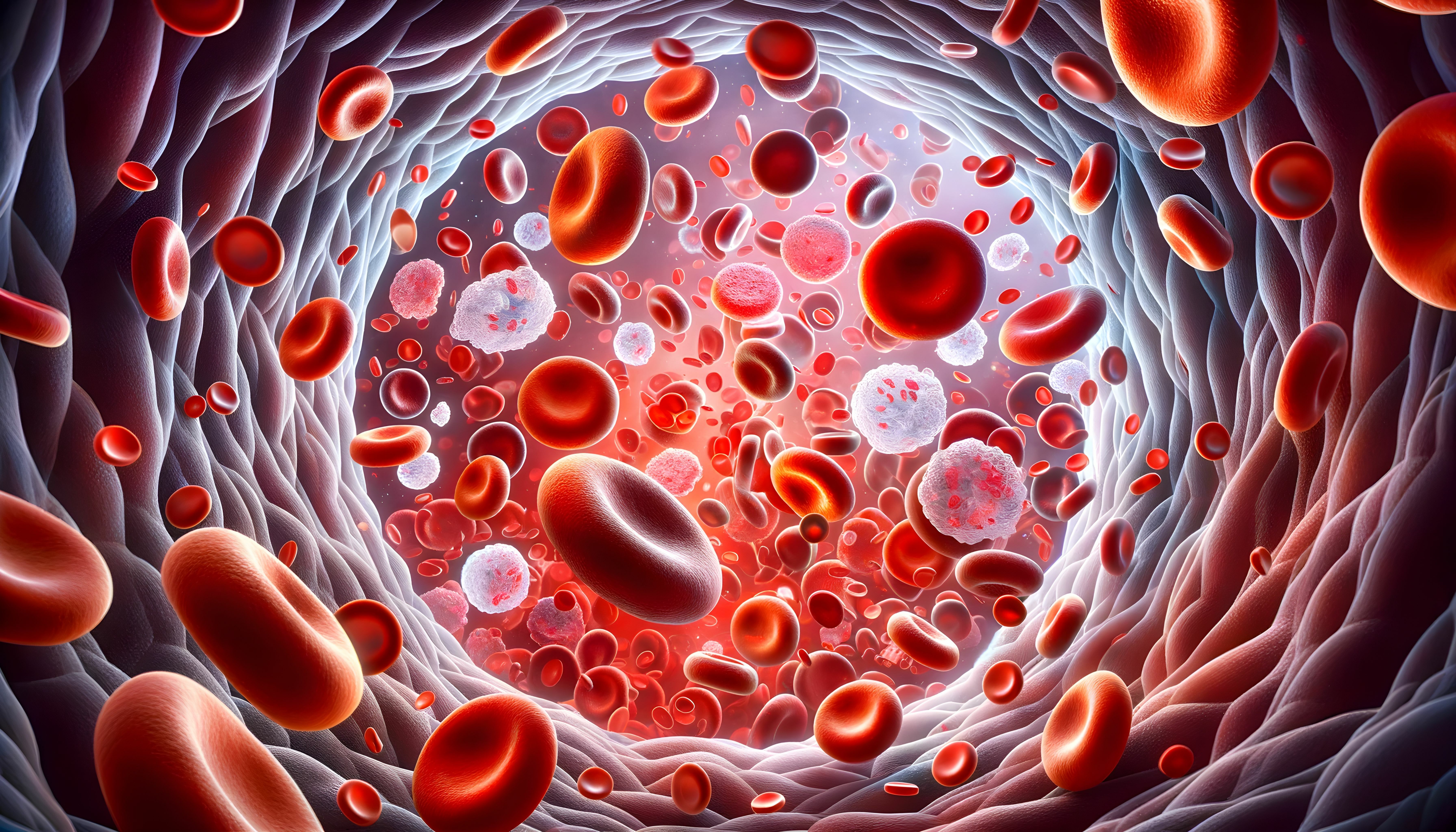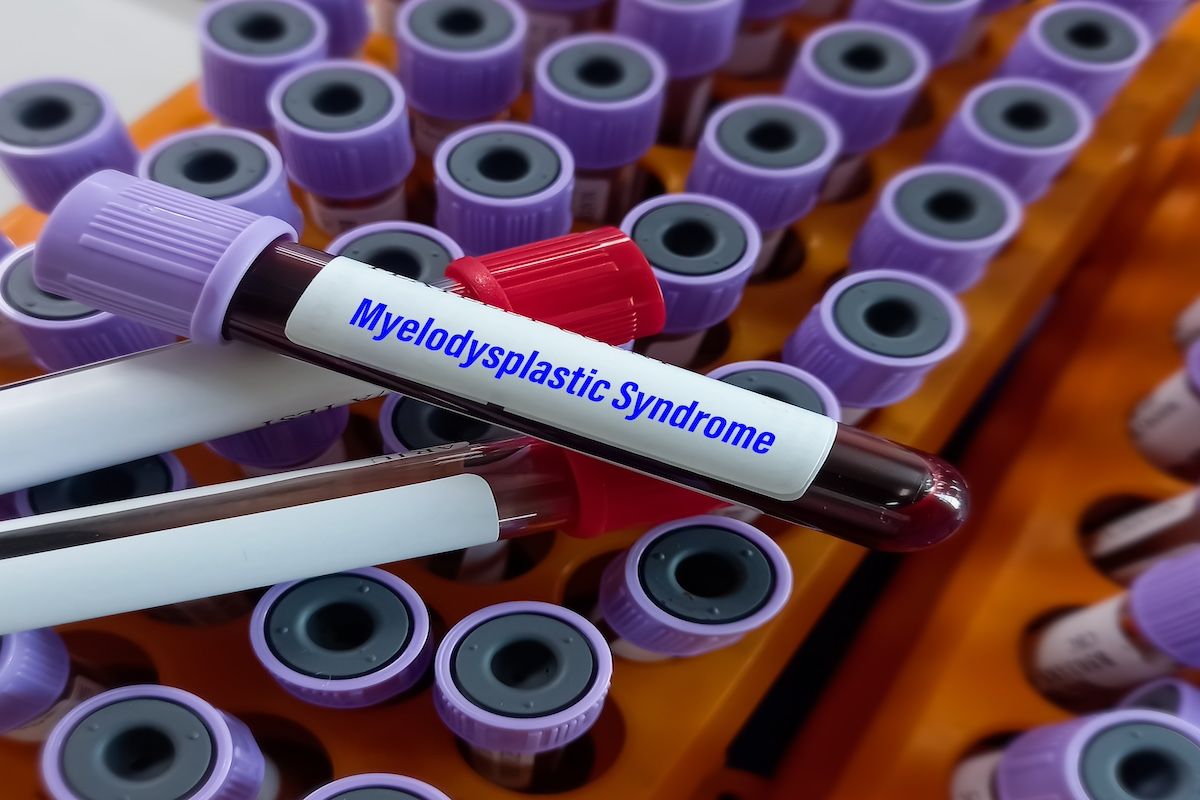Commentary
Article
Stripped of Fucose, Powerful Monoclonal Antibody Shows Promising Results in MDS Dosing Study
Author(s):
Key Takeaways
- SEA-CD70 targets CD70 on myeloid blasts, enhancing immune response and disrupting CD70/CD27 interaction, showing potential in MDS and AML treatment.
- The phase 1 study reported a 44% objective response rate and 56% blast clearance in high-risk MDS patients treated with SEA-CD70 and azacitidine.
Nicole Grieselhuber, MD, PhD, of The Ohio State University, discusses results from Part D of a dosing study involving patients with previously untreated higher-risk myelodysplastic syndrome (MDS) who were treated with a combination of SEA-CD70 and azacitidine.
A powerful new technology with potential to treat myelodysplastic syndromes (MDS) and acute myeloid leukeumia (AML) showed promise in a dosing study presented December 7-10, 2024, at the 66th American Society of Hematology (ASH) Annual Meeting and Exposition, held in San Diego, California.
Nicole Gieselhuber, MD, PhD | Image credit: Ohio State University

Nicole Grieselhuber, MD, PhD, who is an assistant professor in the Division of Hematology, Department of Internal Medicine at The Ohio State University, presented findings from 1 portion of a 6-part, phase 1 open-label, multicenter dosing study (NCT04227847) of the investigational therapy SEA-CD70, developed by Seattle Genetics (Seagen), which was acquired a year ago by Pfizer.
A 2018 article by Life Science Leader described Seattle Genetics’ development of “sugar-engineered antibodies,” using proprietary technology that removes 100% of fucose, an essential sugar that allows the body to control cell-to-cell communication. Although largely beneficial, research had also indicated a role in cancer development. Removing fucose, and creating a “nonfucosylated” antibody, improved effector function, resulting in a more potent immune response.
The therapy in this study targets CD70, which is expressed on myeloid blasts in myeloid malignancies but has limited expression in normal cells, making it a strong potential target. Both CD70 and CD27 are expressed on MDS and AML malignant blasts, and the new antibody is designed to disrupt the interaction between them.
Greiselhuber reported on results from Part D of the dosing study, involving patients with previously untreated higher-risk (HR) MDS, who were treated with a combination of SEA-CD70 and azacitidine. To take part, patients were at least 18 years of age, rated intermediate-2 or higher risk per the International Prognostic Scoring System (IPSS), with increased blasts in the bone marrow (5%-19%), and had Eastern Cooperative Oncology Group performance status (ECOG PS) of 2 or less. Using revised IPSS, patients were moderate-high, high, or very-high risk.
Those in the study received intravenous (IV) SEA-CD70 at 10 mg/kg or 20 mg/kg on day 1 and day 15 and subcutaneous or IV azacitidine at 75 mg/m2 on day 1 and day 7 of 28-day cycles.
Results. At the data cutoff on June 9, 2024, the study had enrolled 35 patients and 32 had received at last 1 dose of SEA-CD70 plus azacitidine; of this group, 14 had the 10 mg/kg dose and 18 had the 20 mg/kg dose of SEA-CD70. The median age was 72 years; most had a baseline ECOG PS of 0-1 (84%). There were 25 patients who could be evaluated for efficacy (12 at the 10 mg/kg dose, and 13 at the 20 mg/kg dose). The objective response rate, defined by the 2006 International Working Group (IWG) criteria, was 42% (95% CI, 15.2%-72.3%) for 10 mg/kg and 46% (95% CI, 19.2-74.9) for the 20 mg/kg dose, and 44% (95% CI, 24.4%-65.1%) overall.
Blast clearance rate, defined as the proportion achieving a best response of complete remission (CR), CR with partial hematologic recovery (CRh), or marrow CR, was 58% (95% CI, 27.7%-84.8%) for 10 mg/kg, 54% (95% CI, 25.1%-80.8%) for 20 mg/kg, and 56% (95% CI, 34.9%-75.6%) overall.
Among those with responses, median time to response was 3.7 months for the 10 mg/kg dose, 1.6 months for 20 mg/kg, and 1.6 months overall. Across both doses, median duration of response was 13.6 months. The overall survival, event-free survival, and duration of response data were not mature at cutoff. Rate of conversion to transfusion independence was 36% (95% CI, 18.0%-57.5%), and the rate of transfusion independence maintenance was 28% (95% CI, 12.1%-49.4%). Following treatment, 5 (16%) patients received stem cell transplant (3 immediately after and 2 of whom received intervening anticancer therapy). The authors concluded that results support continued study of both doses.
Grieselhuber responded to questions from The American Journal of Managed Care® (AJMC®) about the findings:
AJMC: Can you describe the clinical rationale for targeting CD70 in patients with high-risk MDS?
Grieselhuber: CD70 is aberrantly expressed on the surface of myeloid blasts, including leukemia stem cells, and promotes self-renewal and proliferation while inhibiting normal myeloid differentiation.
AJMC: How specifically does SEA-CD70 work to curtail proliferation of leukemic blasts?
Grieselhuber : SEA-CD70 has multiple mechanisms of action, including enhanced antibody-dependent cellular cytotoxicity, antibody-dependent cellular phagocytosis, and mediation of complement-dependent cytotoxicity. It also blocks interaction of CD70 with its ligand, CD27, inhibiting activation of CD27/CD70 signaling.
AJMC: How does SEA-CD70 interact with azacitidine in MDS?
Grieselhuber: Azacitidine increases expression of CD70 and CD27/CD70 signaling in blasts, providing a rationale for targeting CD70 in combination with azacitidine. Preclinical studies suggest additive effects of azacitidine and SEA-CD70
AJMC: Can you describe the side effect profile of this therapy?
Grieselhuber: Adverse events (AEs) were generally consistent with the known side effect profile of azacitidine, with diarrhea, constipation, fatigue, and cytopenias being the most common reported treatment-emergent AEs. Specific to SEA-CD70, 16% of patients had infusion reactions, but these were generally manageable.
AJMC: What efficacy was observed with the SEA-CD70 and azacitidine combination? What doses will be pursued for further study?
Grieselhuber: The objective response rate per 2006 IWG criteria was 44% across both the 10 mg/kg and 20 mg/kg cohorts. We also saw 56% of patients had blast clearance, defined as best response of CR, CRh, or marrow CR. At this time our data regarding OS [overall survival] and duration of response are not mature but are encouraging. The plasma concentration of SEA-CD70 increased dose-proportionately from 10 to 20 mg/kg. We are still evaluating dosing for future studies.
References
Grieselhuber NR, Baratam P, Advani AS. PF-08046040 (SEA-CD70), a nonfucosylated CD70-directed antibody, in combination with azacitidine for patients with myelodysplastic syndromes (MDS): a phase 1 dose-finding and dose-expansion study. Blood. 2024;144(suppl 1):Abstract 1840. https://doi.org/10.1182/blood-2024-199634

Navigating Sport-Related Neurospine Injuries, Surgery, and Managed Care




